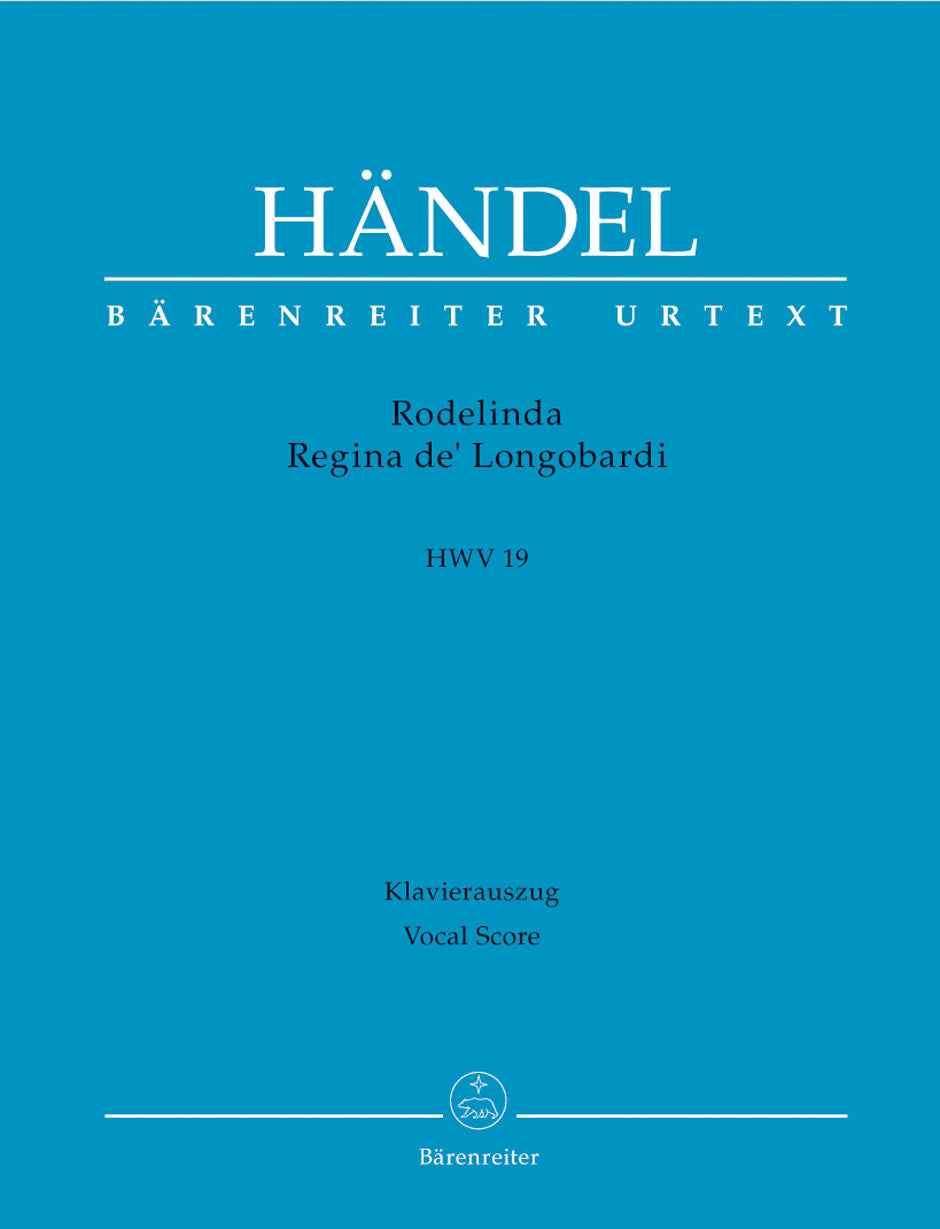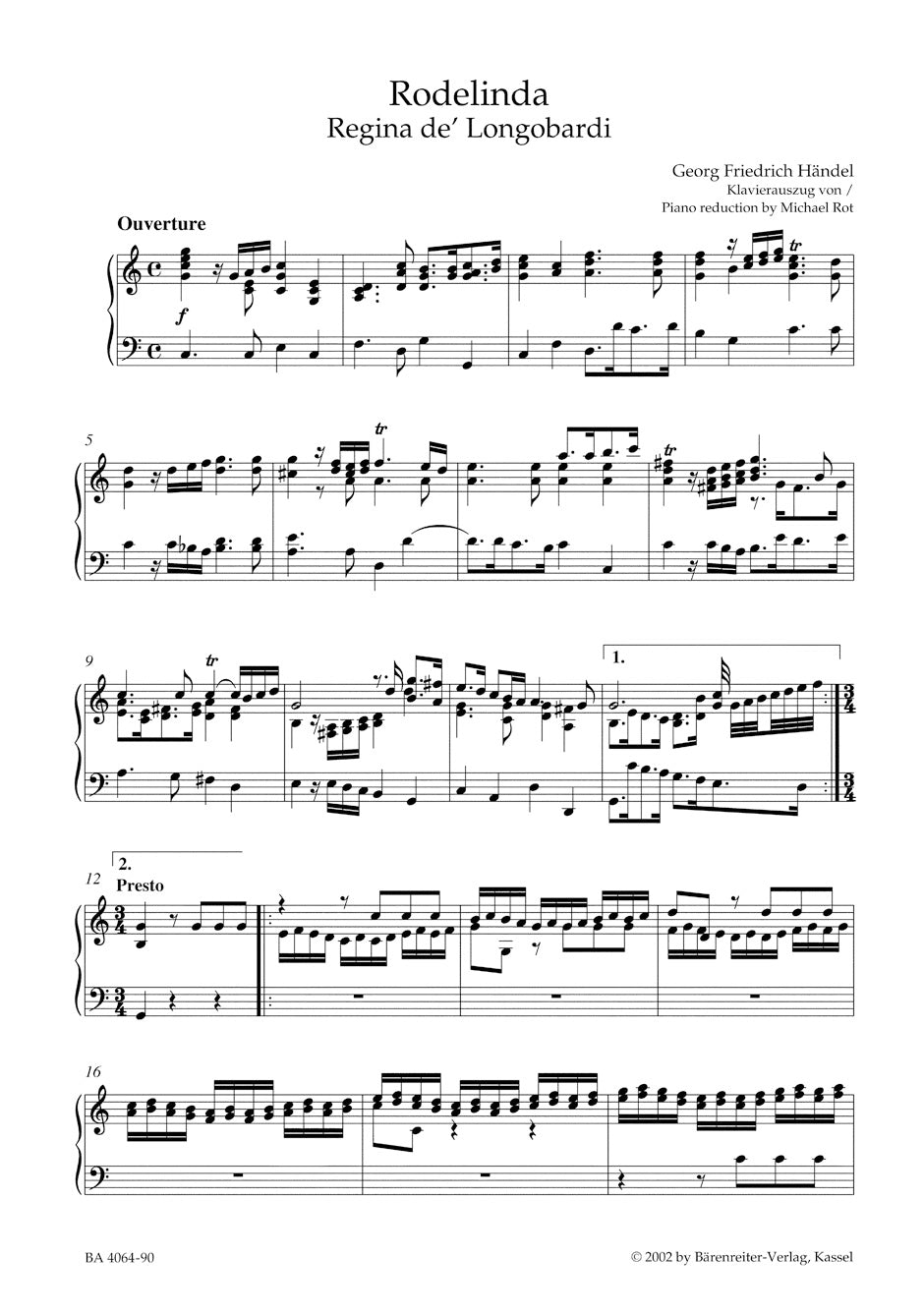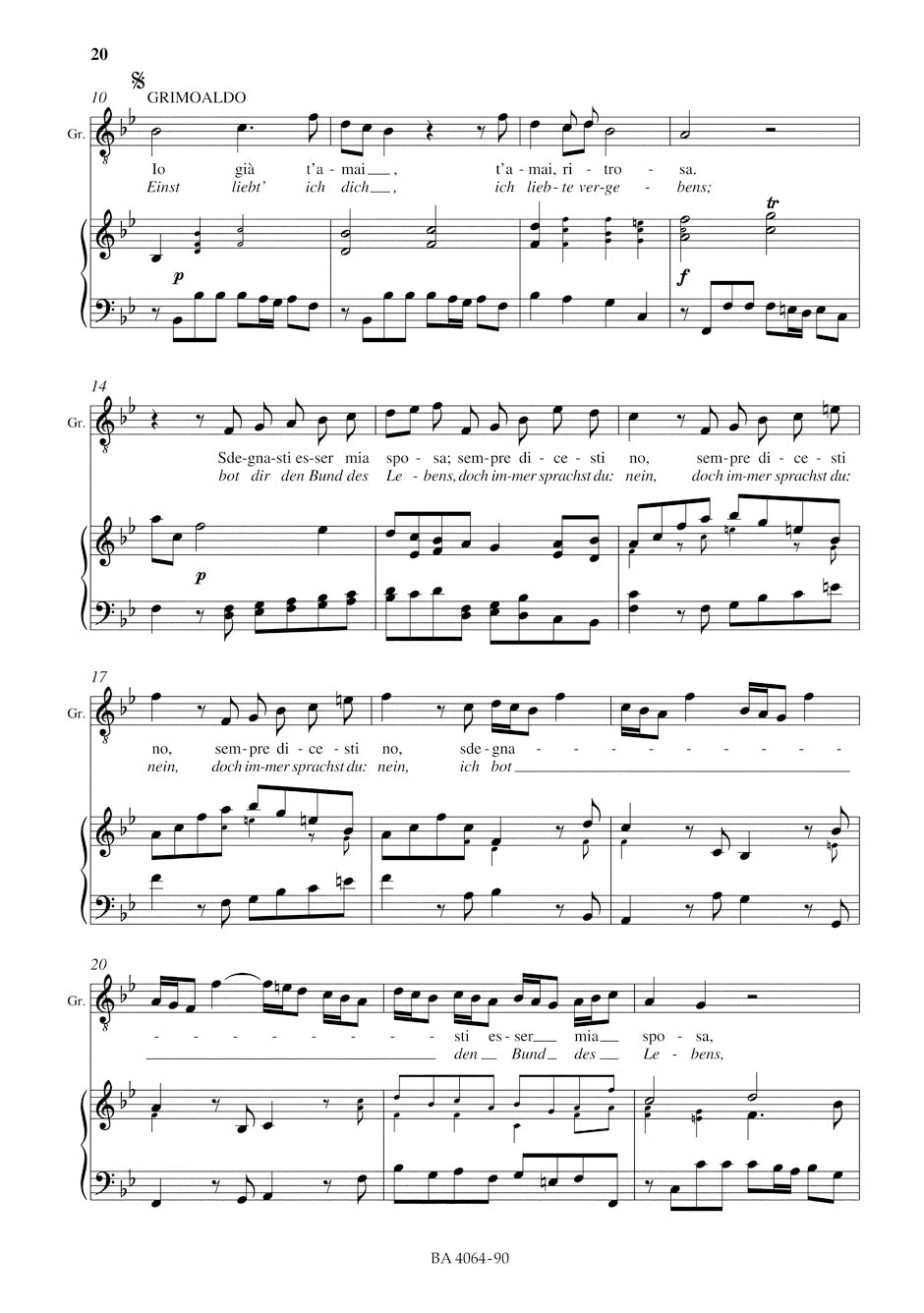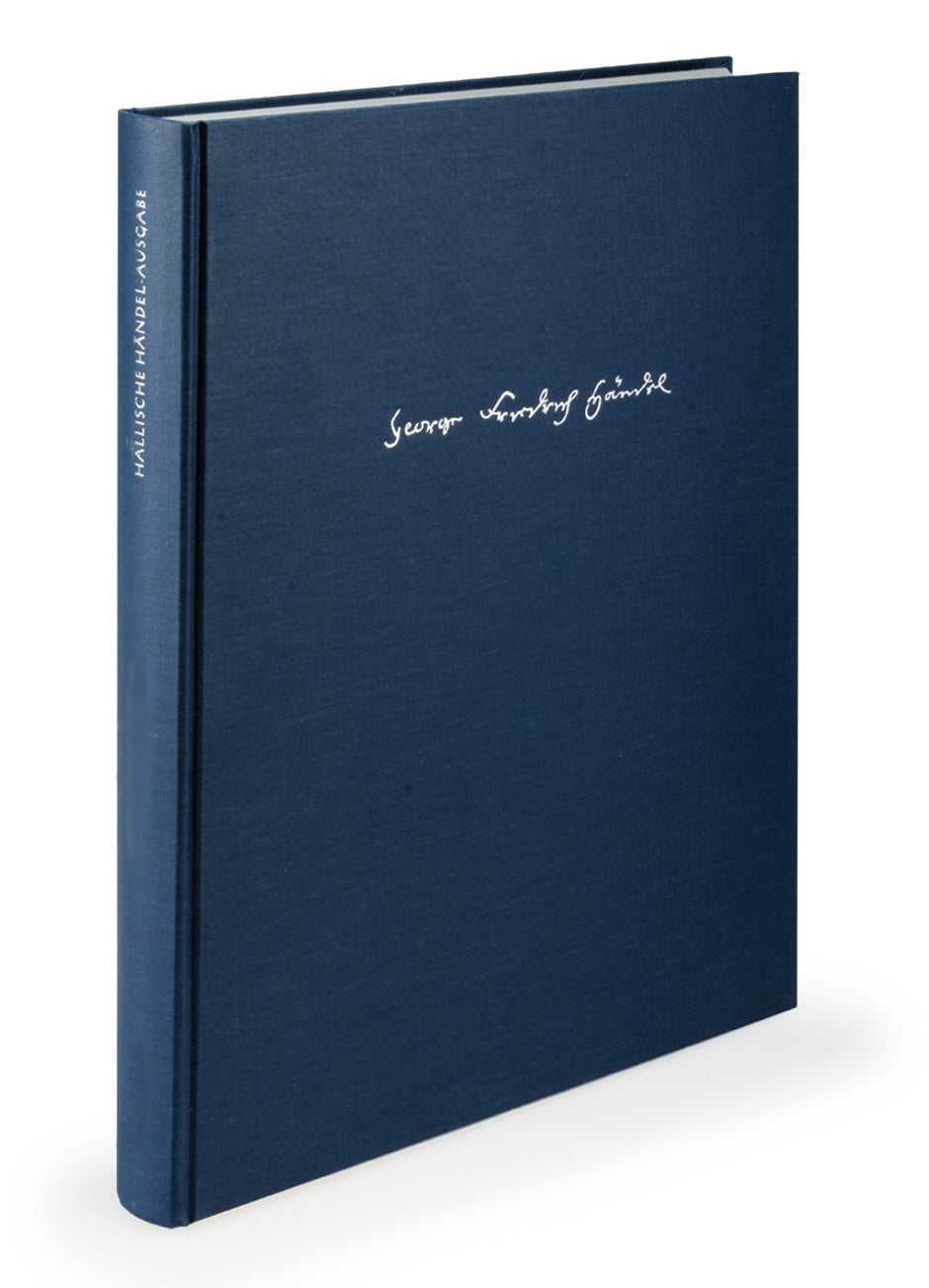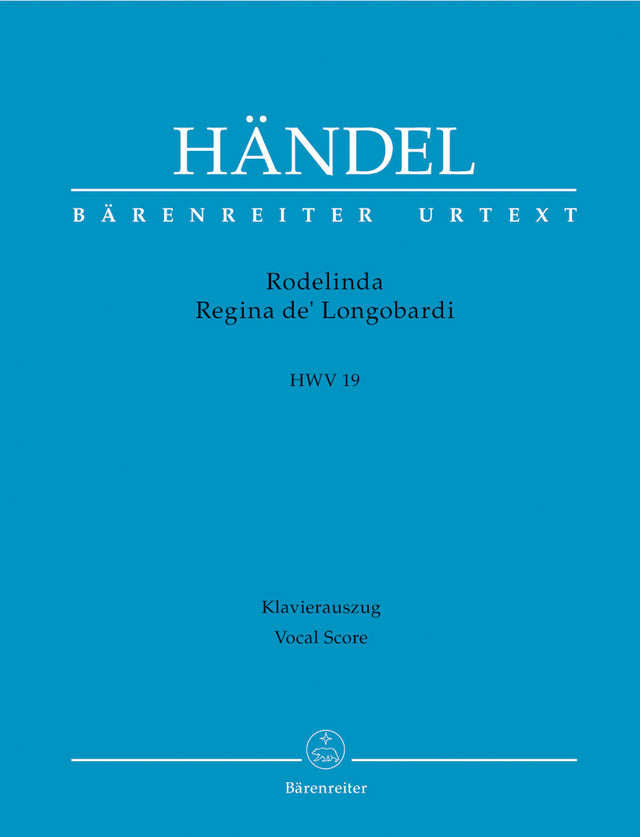Handel: Rodelinda, Regina de' Longobardi, HWV 19
Dramma per musica in 3 acts
In stock and typically ships within 1 business day.
- Composer: George Frideric Handel (1685-1759)
- Editor: Andrew V. Jones
- Instrumentation: Opera
- Work: Rodelinda, Regina de' Longobardi, HWV 19
- Work Languages: German, Italian
- ISMN:
- Size: 7.5 x 10.6 inches
- Pages: 303
- Urtext / Critical Edition
Description
After Giulio Cesare and Tamerlano, Rodelinda is the third masterly opera that Handel composed between December 1723 and January 1725. The words were written by Nicola Haym, the author of many other Handel librettos. The first performance took place at the King's Theatre in the Haymarket, London , on 13 February 1725. Rodelinda thrives entirely on the ethical supremacy of conjugal love, and thus prefigures the great operas by Gluck and Beethoven on the same subject. The plot is taken from the history of the Lombard royalty. Oskar Hagen's revival of Rodelinda in 1920 ushered in the modern Handel opera movement.
The work forms the climax to a series of dramatic masterpieces that includes Handel's most significant operas.
Handel returned to Rodelinda on two occasions, in December 1725 and in May 1731. Many far-reaching changes were necessary owing to the different skills of the new singers.
For example, Handel wrote three new arias and a duet for the first revival. Yet the changes he made for this performance, doubtless to accommodate the needs and wishes of the singers, also improve the work's dramatic substance.
Publishers use a lot of words to describe what they sell, and we know it can be confusing. We've tried to be as clear as possible to make sure you get exactly what you are looking for. Below are descriptions of the terms that we use to describe the various formats that music often comes in.
Choral Score
A score for vocalists that only contains the vocal lines. The instrumental parts are not there for reference. Generally, cheaper than a vocal score and requires multiple copies for purchase.
Facsimile
Reproductions of the original hand-written scores from the composer.
Full Score
For ensemble music, this indicates that the edition contains all parts on a single system (there are not separate parts for each player). In larger ensembles, this is for the conductor.
Hardcover
Hardbound. Generally either linen-covered or half-leather.
Orchestral Parts
Similar to a wind set, this is a collection of parts. In the case of strings, the numbers listed are the number of copies included, though generally these are available individually (often with minimum quantities required).
Paperback
When publishers offer multiple bindings (e.g. hardcover) or study scores, this is the "standard" version. If you're planning to play the music, this is probably what you want.
Performance / Playing Score
A score of the music containing all parts on one system, intended for players to share. There are not separate parts for each player.
Set of Parts
For ensemble music, this indicates that there are separate individual parts for each player.
Solo Part with Piano Reduction
For solo pieces with orchestra, this is a version that contains a piano reduction of the orchestra parts. For piano pieces, two copies are typically needed for performance.
Study Score
A small (think choral size) copy of the complete score meant for studying, and not playing. They make great add-ons when learning concertos and small chamber works.
Vocal Score
A score prepared for vocalists that includes the piano/organ part or a reduction of the instrumental parts.
Wind Set
For orchestral music, this is a collection of wind and percussion parts. The specific quantities of each instrument are notated.
With Audio
In addition to the printed music, the edition contains recordings of the pieces. This may be an included CD, or access to files on the internet.
With / Without Fingering (Markings)
Some publishers prepare two copies - a pure Urtext edition that includes no fingering (or bowing) suggestions and a lightly edited version that includes a minimal number of editorial markings.

